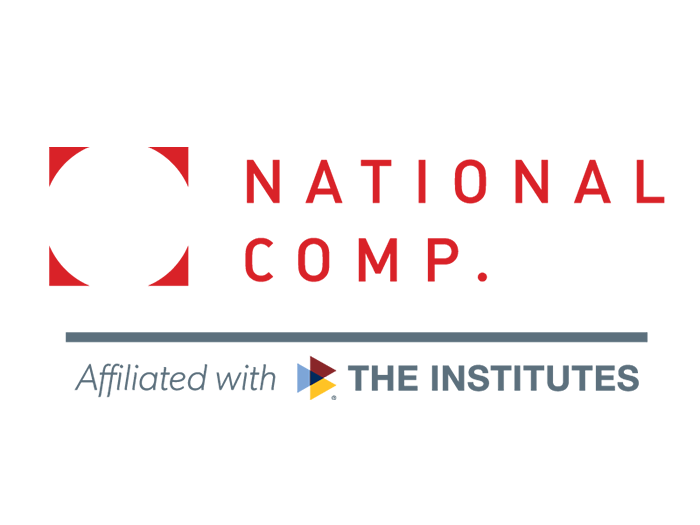Sponsored: Broadspire - A Crawford Company
4 Best Practices in Workers’ Compensation Claims Management

Workplace injuries are never a welcome event. Employers want to ensure their employee gets well and back to work as quickly as possible. Workers’ compensation claims management should expedite that process, not hinder it. Often, claims are tripped up by processing delays, poor communication and lack of sufficient clinical resources. That can drive an injured worker to litigation, which not only increases costs but hampers productivity and workplace morale as well.
The role of the claims adjuster is to seek the best possible outcome for injured worker and employer alike, and in the shortest time frame — a task requiring good organizational, communication and analytical skills.
Despite being notoriously busy, adjusters can enhance efficiency and accuracy by following these four best practices, creating a smoother claim resolution process and improved outcomes for every party involved.
1. Early Intervention
A common pitfall in workers’ compensation claims management is delayed reporting for seemingly less serious injuries.
“A risk manager or supervisor might think that if an injury is minor, the worker won’t need to seek treatment, and that they can handle it themselves in-house. But that can snowball very quickly,” said Charlene Shaffer, JD, senior claims examiner at Broadspire.
Reporting an injury immediately — no matter how small — allows adjusters to hit the ground running, setting up communication with the injured worker and ensuring their medical needs are being met and appropriately compensated.
This goes a long way in alleviating stress and anxiety for that worker. They feel that their health is prioritized, and they don’t have to worry about lost wages or out-of-pocket medical costs. When there is a delay in reporting, and subsequently a delay in claim processing, injured workers can feel like they’ve fallen through a gap.
“That person is going to get frustrated, and they are probably going to get an attorney. So now we’re dealing with potential litigation and the claim hasn’t even been set up,” said Shaffer.
Reporting delays can also lead to loss of evidence. The environment where the injury took place could be cleaned up or altered before an adjuster assesses it. People’s memories become hazy. A proper investigation is much more difficult as more time passes. This prolongs the life of a claim, hampers an employer’s ability to defend itself in the face of litigation and ultimately drives up claim costs.
“At Broadspire, we encourage employers to report any injury and/or incident that could potentially become a claim. We process and set up the claim immediately, whereas other TPAs might only set up new claims once per day. Acting quickly and establishing a connection with the injured worker as soon as possible heads off a lot of the problems that stem from late reporting,” Shaffer said.
2. Proactive Communication Among All Stakeholders
In addition to the injured worker, employer and carrier, workers’ compensation claims also include the adjuster, nurse case managers, medical providers, and risk managers and brokers. With so many seats at the table, it’s easy for communication to become jumbled. This can cause delays of care, prolonging the recovery process and, again, increasing the risk of litigation and increasing costs.
“Coordinating all of those parties is a big job, but it is critical to keep everyone on the same page in order to keep the claim moving forward towards closure,” Shaffer said.
One way to keep all stakeholders informed is to host frequent roundtable discussions beyond regular claim reviews, which may occur only quarterly.
“If we have to spend an hour once every two weeks having these discussions, then that’s what we’ll do. Investing that time up front to keep everyone aligned is well worth it if it prevents delays in care for the injured worker that end up extending a claim by months,” Shaffer said.
3. Utilizing Return-to-Work Programs
Getting injured workers back on the job in some capacity bolsters their recovery and reduces medical and indemnity spend. A light-duty position provides an injured worker with structure and purpose and helps to take their focus off their injury.
Some employers eschew return-to-work programs because they have no light-duty positions available and cannot accommodate an injury without undue hardship. In these cases, a TPA can help to design a return-to-work program that assigns workers to a position at an outside organization, like a nonprofit. However, not all employers see the benefit of paying a wage for an injured worker to work someplace else.
Despite this extra spend, “in my experience, claims that involve a return-to-work program are resolved much faster. That employee generally is motivated to get back to their baseline as quickly as they can,” Shaffer said.
“Typically, workers that have not returned to work within six months of their injury are far less likely to ever return at all. So giving an injured worker a job to accomplish — even if it’s for another entity — increases the odds they’ll be back in their original position faster. That’s ultimately good for the employer’s bottom line.”
4. Data-Driven Decision-Making
Claims provide a wealth of information that, when captured and analyzed, can guide more concise interventions, enable faster decision-making and drive earlier claim resolution.
“From the moment a claim comes in, we are capturing data. We’re feeding everything we possibly can into our system. Our AI and machine learning tools can pool and comb through this data and tell us things like which claims may be more prone to litigation, which ones should have a nurse case manager assigned etc.,” Shaffer said. “It helps us to spot problems before they become a problem.”
Analytics can also help employers create more targeted risk management interventions. The data may show, for example, that the majority of their workplace injuries are happening at a specific location, or at a certain time of day, or involve a certain piece of equipment. Recognizing these traits can help employers to identify and eventually eliminate the hazards that contribute to injuries.
Trust Your TPA
Executing these practices also requires a close relationship between a TPA and the carriers and employers they serve. Ultimately, Workers’ Compensation payers need to trust their TPA to act in their best interests.
Broadspire sees itself as a true partner to its clients.
“That’s a piece we always try to communicate to our partners. We are here to help you. We understand that it’s your business. It’s your money. It’s your employees. You want these claims taken care of. Let us take care of it for you,” Shaffer said.
Broadspire delivers on this promise by developing and continually coaching a staff of adjusters who have these practices ingrained within their day-to-day process. That training includes everything from recorded webinars to live, in-person sessions to on-demand case studies.
“The case studies are story-based and interactive. They take trainees through a claim scenario to demonstrate where these practices — early intervention, proactive communication and leveraging data analytics — can make a big impact on the claim’s outcome,” Shaffer said.
“We focus on education to ensure that that all of our adjusters are equipped to deliver the highest level of customer service,” Shaffer said.
“We are also always sharing our data insights to show how we make an impact on claim outcomes, and to help our partners make informed decisions.
“We ask for our clients’ trust, and we are prepared to earn it,” she concluded.
To learn more, visit Home | Broadspire (choosebroadspire.com).
![]()
This article was produced by the R&I Brand Studio, a unit of the advertising department of Risk & Insurance, in collaboration with Broadspire, A Crawford Company. The editorial staff of Risk & Insurance had no role in its preparation.









